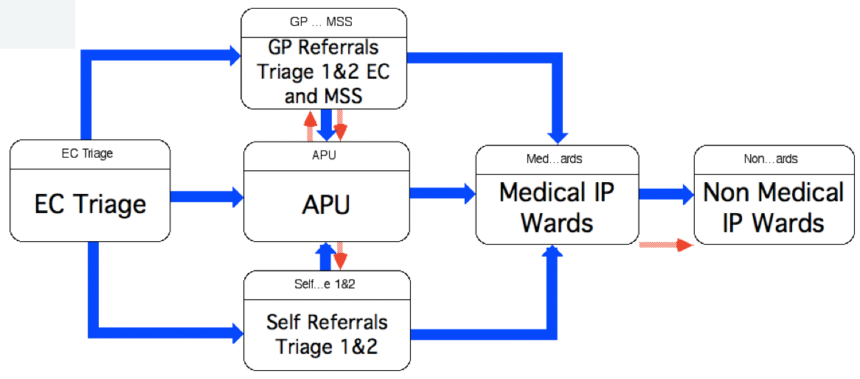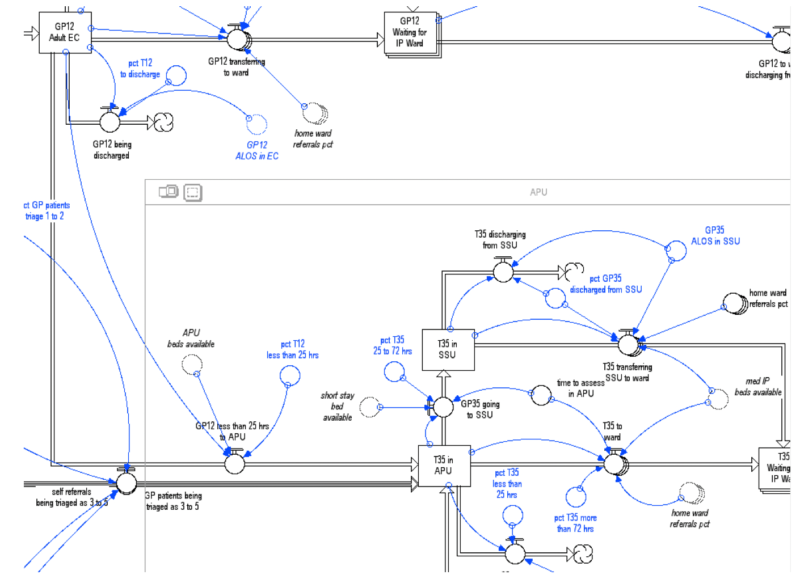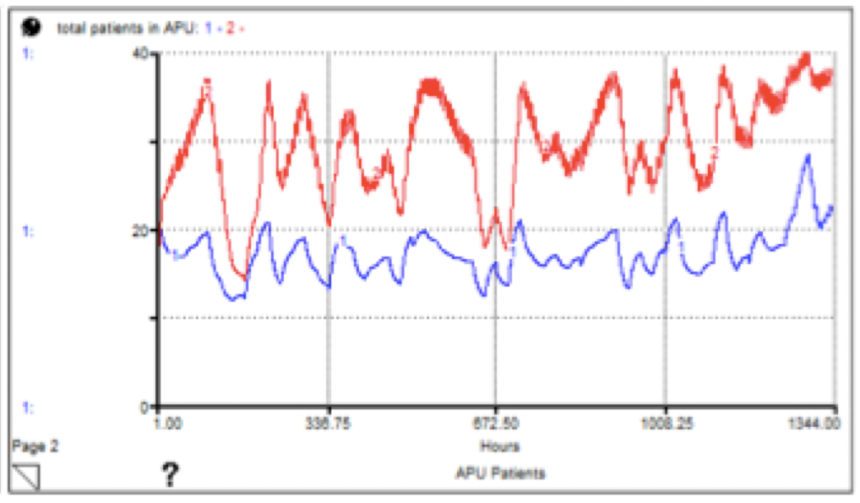
High-level overview of the model
Specifically, the model was designed to answer three very specific questions. Firstly, how big would the APU need to be under different rules and assumptions around length of stay? Secondly, how much capacity would a short stay ward need to be, and what percentage of patients would go through this ward? Thirdly, what would be the impact of these options on inpatient wards?

Model extract showing patient flow
The model was developed to support conversations with the clinicians, architects and decision makers who were going to decide on the size and configuration of the extended facilities. The model allowed for modifying assumptions around ward capacities, length of stay in different wards, assumptions about arrival volumes, source and triage category as well as assumptions about which wards the patients would flow into. This allowed all parties to explore the implications of different sets of assumptions and agree not just the number of beds required but also the most appropriate configuration mix.

Number of patients in the APU under two different models of care

